
FAN-TASTIC VENT
FAN
REVISION C | Form No. 8613-01 05/19 | ©2019 Dometic Corporation
Fan-Tastic Vent™ Fans and Controllers
EN
Fan-Tastic Vent
Installation and Operation Manual ..............1
FR
Fan-Tastic Vent
Manuel d’installation et d’utilisation ...........17

2
EN
Fan
NORTH AMERICAN ADDRESS INFORMATION
USA & CANADA
Service Office
Dometic Corporation
1120 North Main Street
Elkhart, IN 46514
Service Center & Dealer Locations
Visit: www.dometic.com
Read these instructions carefully. These instructions MUST stay with this product.
CONTENTS
1 Explanation of symbols and safety instructions ................................................ 2
2 General information ..................................................................... 3
3 intended use ........................................................................... 3
4 Installation ............................................................................. 4
5 Operation ............................................................................. 6
6 Maintenance .......................................................................... 14
1 EXPLANATION OF SYMBOLS AND SAFETY INSTRUCTIONS
This manual has safety information and instructions to help you eliminate or reduce the risk of accidents, injuries,
or property damage.
1.1 Recognize safety information
This is the safety alert symbol. It is used to alert you to potential physical injury hazards. Obey all safety
messages that follow this symbol to avoid possible injury or death.
1.2 Understand signal words
A signal word will identify safety messages and property damage messages, and will indicate the degree or level
of hazard seriousness.
indicates a hazardous situation that, if not avoided, could result in death or serious injury.
indicates a hazardous situation that, if not avoided, could result in minor or moderate injury.
is used to address practices not related to physical injury but could result in property damage.
I
indicates additional information that is not related to physical injury or property damage.

3
EN
Fan
1.3 Supplemental directives
Read and follow all safety information and instructions to avoid possible injury or death.
Read and understand these instructions before installation or operation of this product.
Incorrect installation or operation of this product can lead to serious injury. The installation must comply
with all applicable local or national codes, including the latest edition of the following standards:
U.S.A.
• ANSI/NFPA70, National Electrical Code (NEC)
• ANSI/NFPA 1192, Recreational Vehicles Code
Canada
• CSA C22.1, Parts l & ll, Canadian Electrical Code
• CSA Z240 RV Series, Recreational Vehicles
2 GENERAL INFORMATION
Recommended Hardware and Supplies
No. 8 Self-tapping flat-head screws (3/4" to 1" ) Min. 16-gauge stranded copper wire
Gasket or Sealer Insulated wire connectors
Recommended Tools and hardware
Putty Knife or Scraper Standard #2 Phillips Screwdriver
Cordless Drill with 1/8" Drill Bit Pencil or Pen
Straight Edge Measuring Tape
Waterproof Sealant Utility Knife
16 #8 self-tapping flat-head screws
(3/4"–1")
2 #8 flat-head screws (3/8")
Electrical/wiring information
• A minimum of 16-gauge stranded copper wire must be used.
• Insulated connectors must be used.
• Black wire = positive or fused; white wire = negative or ground.
• Fuse: 4 amp “slo-blo.”
3 INTENDED USE
The Fan-tastic Vent
™
is intended for use with the recreational vehicle (hereinaer referred to as “RV”) for which it
is supplied. The Fan-tastic Vent was designed to allow maximum airflow during the operation of vent fans while
providing additional protection from the elements.
The manufacturer accepts no liability for damage in the following cases:
• Faulty assembly or connection.
• Damage to the product resulting from mechanical influences and excess voltage.
• Alterations to the product without express permission from the manufacturer.
• Use for purposes other than those described in the operating manual.

4
EN
Fan
4 INSTALLATION
FALL HAZARD: Vent fans are normally located on the roof of an RV. It is inherently dangerous
to climb onto the roof of an RV to perform installation, maintenance, or repairs on a vent fan. Take appropriate
precautions when climbing onto the roof of an RV or when working on the roof of an RV. Failure to do so could
result in a fall, causing serious injury or death.
4.1 Vent roof mounting
1
Sealant
Roof
Mounting
Flange
(Exterior)
➤ Position the vent over the opening in the RV roof.
➤ Use a gasket or compatible sealant between the
mounting-flange bottom and the roof.
➤ Use 16 no. 8 self-tapping flat-head screws (3/4"–
1") to mount the vent to the roof.
➤ Apply additional sealant over the screws and at the
mounting flange where it meets the roof.
I
For rubber roofs, use EPDM-compatible roof
sealant.
4.2 Fan mounting
2
(Interior)
Interior
Garnish
Ceiling
➤ Aer the ceiling fan has been mounted and
wired, install the interior garnish with the screws
provided. The garnish may be trimmed for thinner
roofs.
SHOCK HAZARD: This product is
designed for 12 VDC use only. Do not connect the
unit to 110 VAC. Failure to follow this instruction could
result in death or serious injury.
SHOCK HAZARD: Disconnect the 12
VDC power supply prior to installation. Failure to do
so could result in mild-to-moderate injury.
DAMAGE HAZARD: The Fan-tastic
Vent is designed to run on filtered DC current. Do not
connect this unit to unfiltered DC current. Doing so
could result in circuit board failure.
➤ Make all electrical connections to an appropriate
12 VDC power source.

5
EN
Fan
4.3 Clamp-fan mounting
3
(Exterior) (Interior)
Roof
Clamp
Garnish
Mounting
Flange
Sealant
Fan Base
Ceiling
All Fan-tastic Vents are available in a “clamp fan” configuration. The clamp garnish screws into the fan base from
inside the RV and trims the ceiling cut-out.
I
RV mfg. clamp fans require mounting screws and correct-height garnish, predetermined by a qualified
installer and Fan-Tastic Vent.
➤ Clamp fans use a double-bead of compatible sealant between the fan base mounting flange and the roof (no
putty tape, butyl or gaskets are to be used with clamp fans).
➤ Using the four screws provided, mount the clamp garnish to the ceiling of the RV. Do not overtighten the
screws.
➤ Torque all screws equally. Do not overtighten.
I
For rubber roofs, use EPDM-compatible roof sealant.
4.4 Mounting the wall controls (RV mfg. models only)
4
Wall Control
Cable
Back
Plate
Notch
Back Plate
(Model 4200 shown)
➤ Locate the notch on the bottom edge of the controller and use a screwdriver in a twisting motion to remove
the back plate.
➤ Pull the RJ-11 controller cable (in the wall) through the square hole in the back plate (from the backside to the
front) and plug it into the front half of the controller.
➤ Hold the back plate to the desired wall location and secure it with two recommended #8 x 3/8" screws
through the two round holes in the back plate.
➤ Push the front half of the wall controller onto the back plate, being sure to align the connector plug with the
square hole, and snap both halves together.

6
EN
Fan
5 OPERATION
Failure to obey the following instructions could result in injury or property damage:
• WATER DAMAGE/LEAK HAZARD:
– Do not leave the vent lid open and unattended for extended periods of time, or under unusual weather
conditions that may result in leakage and serious damage.
– Do not use this product in inclement weather.
➤ Close all outside vents when using your Fan-Tastic Vent.
➤ Slightly open the windows on the shaded side of the RV to provide the most comfortable ambient air, even on
hot days.
I
Direct the airflow by opening a window. Try to position yourself between an open window and the fan for
greatest airflow comfort.
I
If driving while the vent is open, keep it fully open to avoid fluttering or closing unexpectedly.
5.1 Manual li vents
5
➤ To manually open or close the lid on your Fan-
Tastic Vent, grasp the black hand-knob and turn it
in the direction desired.
PINCH HAZARD: Do not pull down
on the knob. Doing so could damage your fan or
cause physical injury.
5.2 Automatic li vents
6
➤ Open the dome approximately 4" or more (the
ceiling fan has a built-in safety switch that will not
allow the fan motor to operate unless the dome is
partially open.)
➤ Turn the three-speed knob to the desired
performance level: 0-OFF, 1-LOW, 2-MEDIUM,
3-HIGH.
➤ For increased airflow, open the window or door
farthest from the vent.

7
EN
Fan
5.3 Operating the reverse switch
7
➤ Move the fan motor switch to the center positon
to turn the fan OFF. Wait for the fan blades to stop
moving.
➤ Select the IN position on the switch to bring air
from the roof area into your coach (pressurizes
inside), or select the OUT position to bring air in
through any openings into the coach, and expel
the air out through the roof.
5.4 Operating the thermostat
➤ With the lid open, select the desired temperature
or comfort level on the thermostat. The fan motor
will start and stop automatically as the interior
temperature of the coach exceeds or drops below
the selected temperature level.
5.5 Model 6300, 6350, 7300, and 7350 premium remote and wall control
100%
85%
70%
55%
40%
25%
10%
Manua uto
Speed
Temp
Air In
Air Out
Down
Up
Rain
Sensor
90/33
85/30
80/27
75/24
70/21
65/18
60/15
Al
100%
85%
70%
55%
40%
25%
10%
Manua uto
Speed
Temp
Down
Up
Rain
Sensor
90/33
85/30
80/27
75/24
70/21
65/18
60/15
Al
8
6300 & 7300 6350 & 7350
I
Remote and wall-control operations are identical.
➤ To open the dome without running the fan, press the OFF button, then press the dome UP/DOWN button.
➤ The control will beep twice if a command is not allowed.
➤ Wireless remote-control models (7300 & 7350) will “sleep” or shut off 30 seconds aer the last command,
to preserve battery life. To “awaken” the controller, push any button on the controller, and it will show the last
temperature and/or speed setting received. If the controller is manually shut off using the ON/OFF button, it
will reset.

8
EN
Fan
Name Function
Fan Power ON/OFF • Press to turn ON the fan (this will start the fan in Auto mode).
• Press to turn OFF the fan (this will stop the fan and close the lid).
Speed
Fan Speed • Press UP to increase the fan speed.
• Press DOWN to decrease the fan speed.
Pressing either button will change fan mode to Manual.
These buttons work in Manual mode only. The fan has 13 speeds. Fan speed is
indicated on the remote in % from 10% (low speed) to 100% (high speed). An
LED will illuminate next to the % of fan speed. If two LEDs are illuminated, then
the speed is halfway between the illuminated %. (for example: Both 85% and
100% LEDs are illuminated; the speed is approximately 93%).
Temp
Thermostat Temperature
Setting: Fahrenheit/
Celsius
• Press UP to increase the Set Temperature.
• Press DOWN to decrease the Set Temperature.
Pressing either button will change fan mode to Auto.
These buttons work in Auto mode only. The fan has 13 temperature settings; the
temperature setting is indicated on the remote in degrees (60 °F–90 °F;15 °C–30
°C). An LED will illuminate next to the degrees setting of the thermostat. If two
LEDs are illuminated, the thermostat setting is halfway between the illuminated
degrees. For example: If both the 85 °F (29 °C) and 90 °F (32 °C) LEDs are
illuminated; the setting is approximately 88 °F (31 °C).
Down
Up
Vent Lid UP/DOWN • When the vent lid is closed, press this button once to open the vent lid.
• When the vent lid is open, press this button once to close the lid. This will
operate independently of the fan ON/OFF switch.
Pressing this button will not change the fan mode. (The rain sensor can be turned
ON or OFF by pressing the button for three seconds.)
Air In
Air Out
Air OUT/IN
(Model 6350 & 7350)
• In either Manual or Auto mode (when the vent lid is open), press this button
once to reverse the fan blade direction. Press it again for the opposite
direction.
Pressing the button will not change the fan mode.
Rain
O
Sensor
Rain Sensor LED • This LED will illuminate when the rain sensor has been turned OFF.
• The rain sensor may be turned ON/OFF by pressing the Rain Sensor UP/
DOWN button for three seconds.
Manual
Manual Mode LED • This LED will illuminate when the controls are in Manual mode.
• Press the Speed UP/DOWN to enter Manual mode.
Auto
Auto Mode LED • This LED will illuminate when the controls are in Auto mode.
• Press the Temp UP/DOWN to enter Auto mode.

9
EN
Fan
5.6 Model 5300, 5350 wall-mounted controls
9
5300
5350
I
When the fan is running: Closing the lid by pressing the UP/DOWN button shuts OFF the fan blade.
Reopening the lid using the UP/DOWN button will revert the fan blade movement to its previous set
speed. Using the ON/OFF button will not do this; the ON/OFF button resets the fan to normal operation.
Name Function
Fan Power ON/OFF
• Press to turn ON the fan (this will start the fan on HIGH).
• Press to turn OFF the fan (this will stop the fan and close the lid).
Fan Speed
• Press UP to increase the fan speed.
• Press DOWN to decrease the fan speed.
(The fan has 13 speeds, not including OFF.)
Vent Lid OPEN/CLOSE
(Model 5350)
• When the vent lid is closed, press this button once to open the vent lid.
• When the vent lid is open, press this button once to close the lid.
(The rain sensor can be turned ON or OFF by pressing this button for three
seconds.)
Vent Lid OPEN/CLOSE
(Model 5300)
• When the vent lid is closed, press the UP button once to open the vent lid.
• When the vent lid is open, press the DOWN button once to close the vent
lid.
(The rain sensor can be turned ON or OFF by pressing this button for three
seconds.)
Air OUT/IN
(Model 5300)
• When the vent lid is open, press this button once to reverse the fan blade
direction; press it again for the opposite direction. Once pressed, the
motor will slow and then reverse direction. If the button is pressed again
during the reversing cycle, a double-beep will indicate the cycle is in
progress. The function can only be changed aer the reversing cycle is
complete.
Rain Sensor LED
• This LED will illuminate when the rain sensor has been turned OFF at the
wall control.
• The rain sensor can be turned ON or OFF by pressing the DOWN button
for three seconds.

10
EN
Fan
5.7 Model 5200, 5250 RJ-11 wall-mounted controls
10
52505200
I
When the fan is running: Closing the lid by using the UP/DOWN button shuts OFF the fan blades.
Reopening the lid by using the UP/DOWN button will revert the fan blade movement to its previous set
speed. Using the ON/OFF button will not do this; the ON/OFF button resets the fan to normal operation.
Name Function
Fan Power ON/OFF
• Press to turn ON the fan (this will start the fan on HIGH).
• Press to turn OFF the fan (this will stop the fan and close the lid).
Fan Speed
• Press to increase the fan speed.
• Press to decrease the fan speed.
(The fan has 13 speeds, not including OFF.)
Vent Lid OPEN/CLOSE
(Model 5250)
• When the vent lid is closed, press this button once to open the vent lid.
• When the vent lid is open, press this button once to close the lid.
Vent Lid OPEN/CLOSE
(Model 5200)
• When the vent lid is closed, press the UP button once to open the lid.
• When the vent lid is open, press the DOWN button once to close the lid.
Air OUT/IN
(Model 5250)
• When the vent lid is open, press this button once to reverse the fan blade
direction; press it again for the opposite direction.

11
EN
Fan
5.8 Model 4200 RJ-11 wall-mounted controls
11
I
When the fan is running: Closing the lid by using the UP/DOWN button shuts the fan blades OFF. Re-
opening the lid using the UP/DOWN button will revert the fan speed to its previous set speed. Using the
ON/OFF button will not do this; the ON/OFF button resets the fan to normal operation.
Name Function
Fan ON 1-2-3
Press to start the fan. Each press increases the fan speed one level:
1. Turns the fan ON and opens the dome at lowest level speed
2. Changes fan to level-2 speed
3. Changes fan to level-3 speed
4. Returns fan to level-1 speed
Fan Power OFF
• Press to turn the power OFF; this will stop the fan and close the lid.
Vent Lid OPEN/CLOSE
• When the vent lid is closed, press this button once to open the lid.
• When the vent lid is open, press this button once to close the lid.

12
EN
Fan
5.9 Model 4100, 4150, 4175
LOWER
RAISE
FAN
ON
FAN
OFF
12
4100 (Standard)
➤ Activate the fan by preselecting 1-LOW, 2-MEDIUM or 3-HIGH, on the fan-blade speed switch.
➤ On the wall control, press the RAISE/LOWER switch pad. Select the RAISE position and press it until the
dome (lid) reaches the desired height, then release the switch pad. At full-open, the dome li motor will
stall; release the switch pad immediately! Select the LOWER position and press it until the lid lowers to
the desired height, then release the pad. At fully closed, the dome li motor will stall; release the switch pad
immediately!
DAMAGE HAZARD: Continuing to press the RAISE/LOWER pad aer the dome is open or
closed will cause damage to the li system.
➤ When the fan is equipped with a fan blade motor-reversing switch, preselect either OUT or IN on the switch;
the center position is OFF (neutral position). As the dome opens and reaches approximately 4", the fan blade
turns on to the preselected speed.
➤ To reverse the fan blade motor while the system is in operation, select the center OFF (neutral) position and
allow the fan blade to stop completely. Once stopped, select the opposite direction and restart the motor.
I
OUT (Exhaust mode) pulls fresh air in through a slightly open window or door while expelling hot, stale,
dusty air out to the roof area. IN (Intake mode) draws air into the coach from the roof area and effectively
pressurizes the coach if all windows, doors and other vents are closed.
➤ When the fan is equipped with a built-in thermostat, preselect a comfort setting from deep blue to deep
red on the thermostat dial (22 °F – 123 °F; –6 °C – 51 °C). The fan motor will turn ON or OFF, based on the
interior ambient temperature when compared to the thermostat setting. When the thermostat temperature is
“satisfied,” the fan motor will turn OFF and the lid will stay open. When the thermostat calls for cooling, the
fan blade motor will activate automatically. The lid must be open at least 4" and OUT or IN must be selected
(not the center OFF position). The ON/OFF switch on the wall controller next to the RAISE/LOWER switch
must be in the ON position before the thermostat can activate the fan blade.

13
EN
Fan
5.10 Model 3300, 3350
➤ Turn the three-speed knob to the desired speed (0-OFF, 1-LOW, 2-MEDIUM, or 3-HIGH).
➤ Select UP to raise the dome lid or DOWN to close the lid from the mini-rocker switch located near the li
motor.
➤ When equipped with a fan blade ON/OFF switch (Model 3300), select ON or OFF. When a fan is equipped
with a fan blade motor-reversing switch (Model 3350), preselect either OUT, IN, or the center OFF position
on the switch. As the dome opens and reaches approximately 4", the fan blade turns on to its preselected
speed and direction. When the lid closes, the fan motor automatically turns OFF. Any time you wish to reverse
the fan blade motor while the system is in operation, select the center OFF (neutral) position and allow the fan
blade to stop completely. Once stopped, you may safely select the opposite direction to restart the motor.
I
OUT (Exhaust mode) pulls clean fresh air in through a slightly open window or door while expelling
hot, stale, stuffy air out to the roof area. IN (Intake mode) draws air into the coach from the roof area and
effectively pressurizes the coach if all windows, doors and other vents are closed.
➤ These two models are equipped with a built-in thermostat. Preselect a comfort setting from deep blue to
deep red on the thermostat dial (22 °F– 123 °F; –6 °C– 51 °C). The fan motor will turn ON or OFF, based on
the interior ambient temperature compared to the thermostat setting. When the thermostat temperature is
“satisfied,” the fan motor will turn OFF and the lid will stay open. When the thermostat calls for cooling, the
fan blade motor automatically activates. The lid must be open at least 4" and OUT or IN must be selected
and not the center OFF position (Model 3350). The ON/OFF switch on the fan must be in the ON position
(Model 3300) before the thermostat can activate the fan blade.
➤ Both models are equipped with a rain sensor. When the lid is open and moisture contacts the sensor, the
lid closes and disengages the fan blade motor. When the rain sensor dries, it will not automatically re-open
the lid. Manually opening the lid by using the li-motor knob will bypass the rain sensor with fan operation,
reverting to the setting prior to the sensor’s activation. When the rain sensor has been overridden by manually
opening the lid, the rain sensor will become active again once it has dried.
5.11 Model 4201, 4251, 4301, 4351
➤ Turn the three-speed knob to the desired performance level (0-OFF, 1-LOW, 2-MEDIUM or 3-HIGH). This will
activate the fan.
➤ Select UP to raise the dome lid or DOWN to lower the lid from the remote wall-mounted switch.
➤ When equipped with a fan blade ON/OFF Switch (Model 4201/4301), select ON or OFF. When a fan is
equipped with a fan blade motor-reversing switch (Model 4251/4351), preselect either OUT, IN, or the
center OFF (neutral) position on the switch. As the dome opens and reaches approximately 4", the fan blade
turns on to a preselected speed and direction. When the lid closes, the fan blade motor automatically turns
OFF. Anytime you reverse the fan blades while the system is in operation, select the center OFF (neutral)
position and allow the fan blades to stop completely. Once stopped, you may safely select the opposite
direction to restart the motor.
I
OUT (Exhaust mode) pulls fresh air in through a slightly open window or door while expelling hot, stale,
stuffy air out to the roof area. IN (Intake mode) draws air into the coach from the roof area and effectively
pressurizes the coach if all windows, doors and other vents are closed.
➤ Both models 4301 & 4351 equipped with a rain sensor. When the lid is open and moisture contacts the
sensor, the lid closes and disengages the fan blade motor. When the rain sensor dries, it will not automatically
re-open the lid. Manually opening the lid by using the li-motor knob will bypass the rain sensor with fan
operation, reverting to the setting prior to the sensor’s activation. When the rain sensor has been overridden
by manually opening the lid, the rain sensor will become active again once it has dried.

14
EN
Fan
6 MAINTENANCE
6.1 Replacing the fuse
13
Fuse Cap
Fuse
➤ Locate the black cap on the face of the screen
assembly. Twist the cap in a counter-clockwise
direction (from right to le) 1/4 to 1/2 turn, and
gently pull down on the cap. The cap should come
free with the fuse attached to the backside.
➤ Inspect the fuse to see if the wire inside the glass
is broken and replace if necessary. Be sure to use
only a 4 amp “slo-blo” fuse.
➤ Place one end of the new fuse into the backside of
the fuse-holder cap and gently push the other end
of the fuse all the way up inside the fuse holder.
➤ Screw the black fuse cap back into place by
turning in a clockwise direction (le to right) until
snug (1/4 to 1/2 turn), and release.
6.2 Replacing batteries in the 7300/
7350 Remote Control
14
Finger
Tab
Battery
Compartment
Square Hole
Alignment
Tab
➤ To remove the battery compartment cover located
on the rear of the remote, pull back on the finger
tab and li.
➤ Match the (+) and (–) markings on the batteries
to the (+) and (–) markings inside the battery
compartment.
➤ To close the battery compartment cover, place
the alignment tab located opposite the finger tab
into the square hole on the back of the remote.
Push the cover down until the finger tab clicks into
place.
6.3 Fixing a stuck lid
DAMAGE HAZARD: If the EPDM rubber dome seal is damaged or torn, contact Dometic for a
replacement.
➤ Open the dome (lid) all the way.
➤ Place a liberal amount of denatured or rubbing alcohol on a clean rag and clean the underside of the lid and
the EPDM rubber seal.
➤ If available, apply a water-based (not petrolium-based) protectant to the inside of the dome where the dome
and seal meet. Allow the protectant to dry and buff the lid with a so cloth to a high sheen.
➤ Use a clean rag, paper towel or foam trim brush to apply an even coating of 100% silicone to the entire top
surface of the EPDM rubber dome seal to prevent it from sticking to the lid.
I
Wipe excess fluid off hands and wash thoroughly with soap and water.

15
EN
Fan
6.4 Cleaning the fan
15
Fuse Cap
Fuse
Fan Blade
Pop N’ Lock
™
Screen Ring
➤ Remove the fuse. Remove the Pop N’ Lock
™
screen ring by grasping the finger tab with one hand and pulling
straight down. Use your free hand to brace against the screen assembly (control panel) to prevent breaking
the Pop N’ Lock screen. Removal of the Pop N’ Lock may be difficult at first, but will get easier with repeated
removal.
➤ Use one hand to hold the fan blade to prevent it from turning and remove the Phillips-head screw from the
center hub face of the fan blade. With the fan-blade screw removed, grasp the fan blade with two hands on
opposite sides (for example, the 3:00 and 9:00 positions) and pull down firmly. It may be necessary to wiggle
the fan blade up-and-down and side-to-side until it slides off the motor sha.
➤ Clean the screen insert (Pop N’ Lock) and fan blade with window cleaner or non-abrasive dish soap and warm
water. You may also place the screen insert and fan blade in the top rack of an automatic dishwasher.
I
Optional: Once the screen and blade are clean and dry, wipe or spray a water- based (not petrolium-
based) protectant on the screen and blade, and buff to high gloss. This minimizes dust and dirt build-up
and eases future cleaning.
➤ Re-assemble the fan by reversing the appropriate steps above.

16
EN
Fan
LIMITED WARRANTY
LIMITED WARRANTY AVAILABLE AT WWW.DOMETIC.COM/WARRANTY.
IF YOU HAVE QUESTIONS OR TO OBTAIN A COPY OF THE LIMITED WARRANTY FREE OF CHARGE, CONTACT:
DOMETIC CORPORATION
CUSTOMER SUPPORT CENTER
1120 NORTH MAIN STREET
ELKHART, INDIANA, USA 46514
+1-800-544-4881 OPT 4

FAN-TASTIC VENT
VENTILATEUR
Ventilateurs et contrôleurs Fan-Tastic Vent™
FR
Fan-Tastic Vent
Manuel d’installation et d’utilisation

18
FR
Ventilateur
ADRESSE – AMÉRIQUE DU NORD
ÉTATS-UNIS ET CANADA
Bureau de service
Dometic Corporation
1120 North Main Street
Elkhart, IN 46514
Liste des centres de service et des revendeurs
Visitez: www.dometic.com
Lisez attentivement ces instructions. Ces instructions DOIVENT rester avec ce produit.
SOMMAIRE
1 Explication des symboles et consignes de sécurité ........................................... 18
2 Informations générales .................................................................. 19
3 Indication ............................................................................ 19
4 Installation ............................................................................20
5 Mode d’emploi ........................................................................ 22
6 Entretien .............................................................................30
1 EXPLICATION DES SYMBOLES ET CONSIGNES DE SÉCURITÉ
Ce manuel contient des consignes de sécurité et des instructions pour aider l’utilisateur à éliminer ou réduire le
risque d’accidents, de blessures et de dégâts matériels.
1.1 Reconnaître les consignes de sécurité
C’est le symbole d’alerte à la sécurité. Il signale des risques de blessures physiques. Obéir à tous les
messages de sécurité qui suivent ce symbole pour éviter les risques de blessures ou de mort.
1.2 Comprendre les mots-indicateurs
Un mot-indicateur identifie les messages de sécurité et les messages liés aux dégâts matériels, et signale le degré
ou niveau de gravité du danger.
indique une situation dangereuse qui, si elle n’est pas évitée, peut causer la mort ou des
blessures graves.
indique une situation dangereuse qui, si elle n’est pas évitée, peut causer des blessures
mineures ou modérées.
est utilisé pour signaler des pratiques non liées à une blessure physique, mais qui peuvent
causer des dégâts matériels.
I
fournit des renseignements additionnels sans rapport avec des blessures physiques ou des dégâts
matériels.

19
FR
Ventilateur
1.3 Directives supplémentaires
Lire et respecter toutes les consignes de sécurité et les instructions pour éviter des blessures, voire la mort.
Lire et comprendre ces instructions avant d’installer ou d’utiliser ce produit.
L’installation ou l’utilisation incorrecte de ce produit peut causer des blessures graves. L’installation doit
se conformer à tous les codes locaux ou nationaux applicables, y compris la toute dernière édition des
normes suivantes:
États-Unis
• ANSI/NFPA70, Code national de l’électricité (CNE)
• ANSI/NFPA 1192, Code des véhicules récréatifs
Canada
• CSA C22.1, Parties l et ll, Code canadien
del’électricité
• CSA Z240 RV Series, véhicules récréatifs
2 INFORMATIONS GÉNÉRALES
Quincaillerie et consommables recommandés
Vis autotaraudeuses à tête plate n
o
8 (19 à 25mm) Fil de cuivre multibrin calibre 16 min.
Joint ou mastic Connecteurs de fils isolés
Outils et quincaillerie recommandés
Couteau à mastiquer ou grattoir Tournevis cruciforme n° 2 standard
Perceuse sans fil avec mèche 1/8 po Crayon ou stylo
Règle droite Ruban
Mastic étanche Couteau universel
16 vis autotaraudeuses à tête plate n
o
8
(19 à 25mm)
2 vis à tête plate n
o
8 (9,5mm)
Électricité/Informations de câblage
• Un fil de cuivre multibrin de calibre 16 minimum doit être utilisé.
• Des connecteurs isolés doivent être utilisés.
• Fil noir = positif ou avec fusible; fil blanc = négatif ou terre.
• Fusible: 4 A, fusion lente.
3 INDICATION
Le Fan-tastic Vent
™
est indiqué pour une utilisation avec le véhicule récréatif (ci-après appelé «VR») pour lequel il
est fourni. Le Fan-tastic Vent a été conçu pour permettre une circulation d’air maximum durant le fonctionnement
de ventilateurs à évent tout en apportant une protection additionnelle face aux éléments.
Le fabricant n’endosse aucune responsabilité en cas de dommages dans les cas suivants:
• Assemblage ou branchement incorrect.
• Endommagement du produit résultant des influences mécaniques et d’une tension excessive.
• Altération du produit sans la permission expresse du fabricant.
• Utilisation à d’autres fins que celles décrites dans le manuel d’utilisation.

20
FR
Ventilateur
4 INSTALLATION
RISQUE DE CHUTE: Les ventilateurs à évent se trouvent normalement sur le toit des VR. Il est
intrinsèquement dangereux de monter sur le toit d’un VR pour installer, entretenir ou réparer un ventilateur à
évent. Prendre les précautions appropriées en montant sur le toit ou en travaillant sur le toit d’un VR. Respecter
cette consigne, sinon cela pourrait mener à une explosion qui pourrait causer des blessures graves ou la mort.
4.1 Installation de l’évent sur le toit
1
Mastic
Toit
Bride de
fixation
(Extérieur)
➤ Positionner l’évent sur l’ouverture dans le toit du VR.
➤ Utiliser un joint ou un mastic compatible entre le
dessous de la bride de montage et le toit.
➤ Utiliser 16 vis autotaraudeuses à tête plate n
o
8
(19à 25mm) pour monter l’évent sur le toit.
➤ Appliquer du mastic sur les vis et sur la bride
defixation au point de contact avec le toit.
I
Pour les toits en caoutchouc, utiliser un mastic
de toit compatible avec l’EPDM.
4.2 Installation du ventilateur
2
(Intérieur)
Garniture
intérieure
Plafond
➤ Une fois le ventilateur de plafond monté et câblé,
installer la garniture intérieure avec les vis fournies.
La garniture peut être coupée sur la hauteur pour
les toits plus minces.
RISQUE DE CHOC
ÉLECTRIQUE: Ce produit a été conçu pour une
utilisation sur du 12V c.c. uniquement. Ne pas
brancher l’appareil sur du 110 V c.a. Respecter cette
instruction, sinon il y aurait risque de blessures graves
ou de mort.
RISQUE DE CHOC ÉLECTRIQUE:
Débrancher l’alimentation 12V c.c. avant l’installation,
sinon il y aurait risque de blessures légères à
modérées.
RISQUE DE DOMMAGES:
LeFan-tastic Vent a été conçu pour fonctionner sur
courant continu filtré. Ne pas brancher cet appareil
sur courant continu non filtré, sinon il y aurait risque
d’endommager la carte de circuits imprimés.
➤ Effectuer tous les branchements électriques sur
une alimentation 12V c.c. appropriée.
La page est en cours de chargement...
La page est en cours de chargement...
La page est en cours de chargement...
La page est en cours de chargement...
La page est en cours de chargement...
La page est en cours de chargement...
La page est en cours de chargement...
La page est en cours de chargement...
La page est en cours de chargement...
La page est en cours de chargement...
La page est en cours de chargement...
La page est en cours de chargement...
-
 1
1
-
 2
2
-
 3
3
-
 4
4
-
 5
5
-
 6
6
-
 7
7
-
 8
8
-
 9
9
-
 10
10
-
 11
11
-
 12
12
-
 13
13
-
 14
14
-
 15
15
-
 16
16
-
 17
17
-
 18
18
-
 19
19
-
 20
20
-
 21
21
-
 22
22
-
 23
23
-
 24
24
-
 25
25
-
 26
26
-
 27
27
-
 28
28
-
 29
29
-
 30
30
-
 31
31
-
 32
32
dans d''autres langues
Documents connexes
Autres documents
-
Camco 25013 Guide d'installation
-
SsangYong NEW CHAIRMAN Le manuel du propriétaire
-
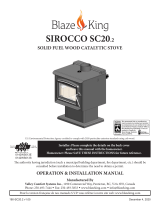 Blaze King Sirocco 20.2 Le manuel du propriétaire
Blaze King Sirocco 20.2 Le manuel du propriétaire
-
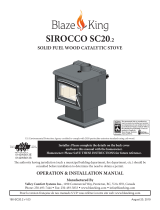 Blaze King Sirocco 20.2 Le manuel du propriétaire
Blaze King Sirocco 20.2 Le manuel du propriétaire
-
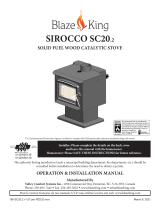 Blaze King Sirocco 20.2 Le manuel du propriétaire
Blaze King Sirocco 20.2 Le manuel du propriétaire
-
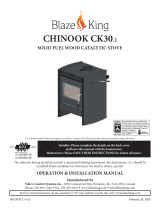 Blaze King Chinook 30.2 Le manuel du propriétaire
Blaze King Chinook 30.2 Le manuel du propriétaire
-
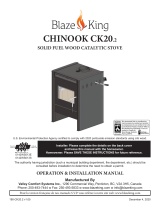 Blaze King Chinook 20.2 Le manuel du propriétaire
Blaze King Chinook 20.2 Le manuel du propriétaire
-
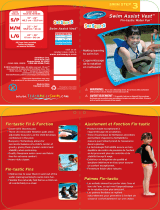 Swim Ways OC-SS-001-WS-S Mode d'emploi
Swim Ways OC-SS-001-WS-S Mode d'emploi





































